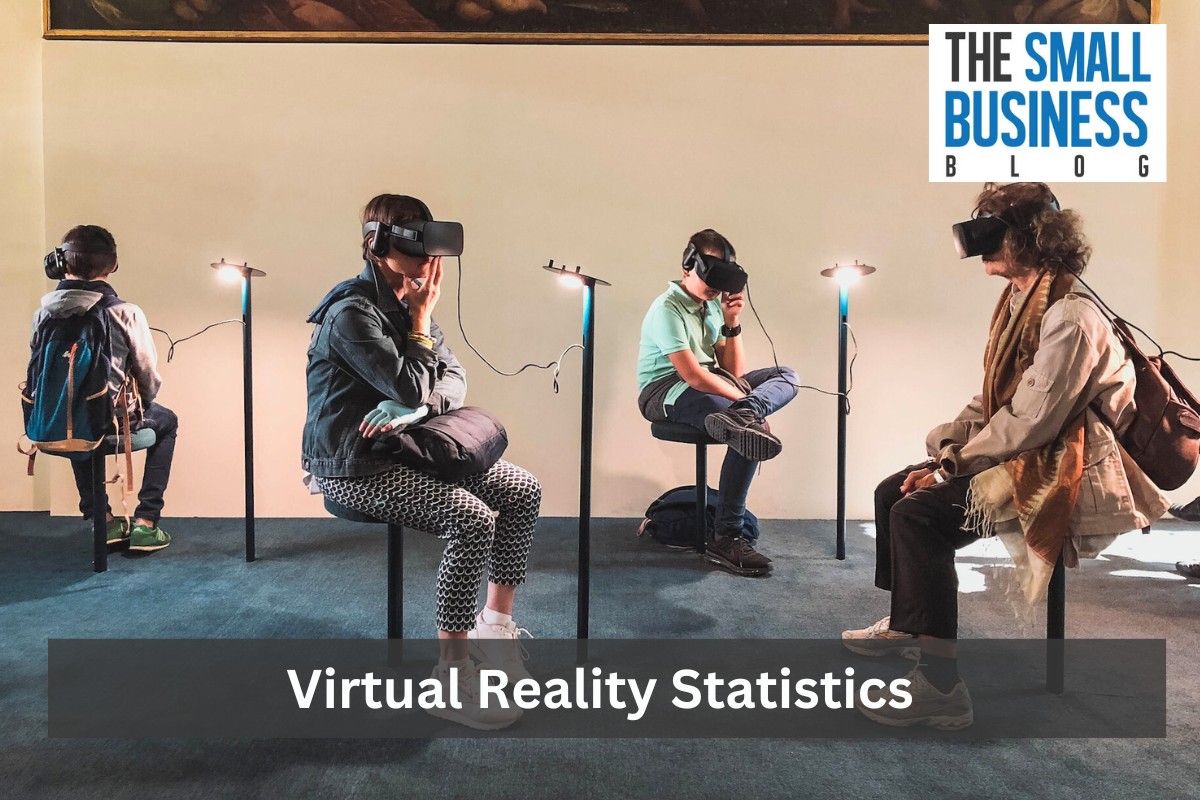Virtual reality or VR has taken the world by storm today, revolutionizing the way we interact with technology and experience the digital realm.
VR is still a relatively new technology, but it has the potential to revolutionize the way we interact with the world around us.
As the technology continues to develop, we can expect to see even more widespread adoption of VR in the years to come.
As we delve into the mesmerizing world of this novel technology, let’s explore some eye-opening virtual reality statistics that shed light on its soaring popularity and widespread adoption!
Post Contents
- 1 General Virtual Reality Statistics in 2024
- 1.1 1. An estimated number of 15.49 million units of AR/VR headsets were shipped in 2022
- 1.2 2. As of 2020, there are 26 million VR headsets in the hands of consumers
- 1.3 3. 75% of Forbes’ “World’s Most Valuable Brands” use Augmented Reality and Virtual Reality technologies
- 1.4 4. 57.8% of individuals reported getting motion sickness from Virtual Reality
- 1.5 5. According to 38% of respondents, VR/AR will exert a substantial impact on the healthcare and medical devices sector
- 1.6 6. Meta Platforms Inc. is one of the leading companies in the Virtual Reality Market
- 2 Market Statistics About Virtual Reality
- 2.1 7. The AR and VR market is anticipated to reach $296.9 billion by 2024
- 2.2 8. The potential market of VR and AR in the Metaverse ranges from $3.75 trillion to $12.46 trillion
- 2.3 9. Virtual Reality is forecasted to have an 18% CAGR between 2021 and 2028
- 2.4 10. The global revenue in Augmented Reality and Virtual Reality is projected to increase by 67.16%
- 2.5 11. The volume of Virtual Reality headsets are expected to be around 27.25 million by 2028
- 2.6 12. With $5.8 billion invested, China is the top spender in Virtual Reality
- 2.7 13. The Virtual Reality gaming industry is expected to reach $92.31 billion by 2027
- 3 Virtual Reality User Statistics
- 3.1 14. Globally, 171 million individuals are utilizing Virtual Reality technology
- 3.2 15. Users within the ages of 25 and 34 comprise 23% of VR/AR users
- 3.3 16. 19% of Americans have used VR at some point in their lives
- 3.4 17. Cost is the biggest obstacle to VR adoption, with 55% of survey respondents citing this as their primary reason
- 3.5 18. Males make up a larger percentage of VR or AR device owners than females, at 57% compared to 43%
- 3.6 19. The United States has 65.9 million Virtual Reality users
- 3.7 20. 70.8 million individuals from the United States use Virtual Reality technology at least once per month
- 4 Virtual Reality Trends
- 5 Conclusion
- 6 Sources
Key Statistics
- Approximately 15.49 million units of AR/VR headsets were shipped in 2022
- As of 2020, there were around 26 million VR headsets in the hands of consumers
- 57.8% of individuals experienced motion sickness when using Virtual Reality
- Meta Platforms Inc. is a leading player in the Virtual Reality Market
- Anticipations indicate that the AR and VR market will achieve $296.9 billion by 2024
- By 2028, the anticipated volume of Virtual Reality headsets is around 27.25 million units
- The Virtual Reality gaming sector is expected to hit $92.31 billion by 2027
- The global count of Virtual Reality technology users stands at 171 million
- Around 19% of Americans have tried VR at least once
- The majority of survey respondents (55%) identified cost as the main hindrance to VR adoption
- In the United States, there are around 65.9 million Virtual Reality users
- By 2030, there will be around 23 million job opportunities utilizing AR and VR technology
General Virtual Reality Statistics in 2024
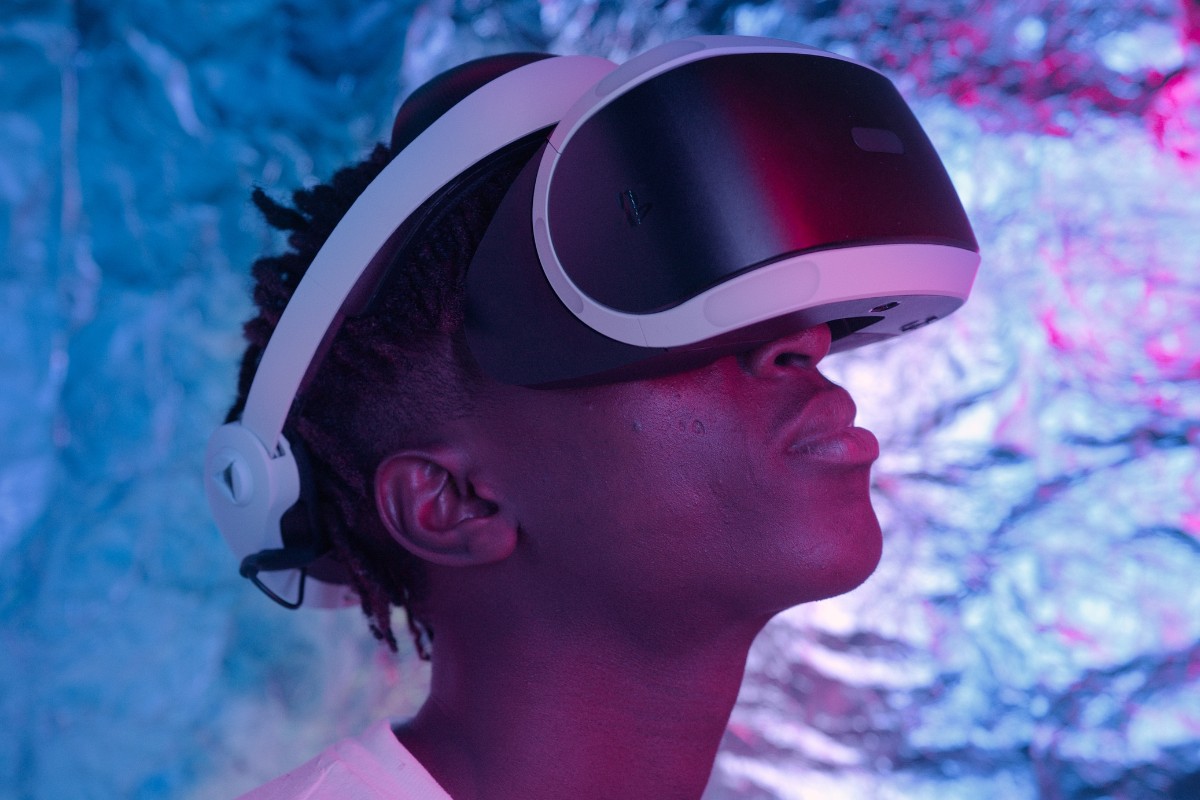
1. An estimated number of 15.49 million units of AR/VR headsets were shipped in 2022
The year 2022 saw an astounding increase in the shipment of VR headsets, reaching a total of 15.49 million consumer units.
This remarkable growth is even more noteworthy considering the global economic downturn that has affected various industries during the recent years.
Virtual Reality (VR) has rapidly evolved from a concept of science fiction into a tangible and immersive technology that captivates users worldwide.
Its applications span across gaming, entertainment, education, and training, making it increasingly relevant in our daily lives.
(XR Today)
2. As of 2020, there are 26 million VR headsets in the hands of consumers
As recently as 2020, a staggering 26 million VR headsets found their way into the hands of consumers across the globe.
This remarkable number bears witness to the exponential growth of VR technology and its increasing appeal to people of all ages and interests.
Virtual Reality enables users to step beyond the confines of the physical world and immerse themselves in a computer-generated environment that stimulates their senses.
From gaming enthusiasts seeking thrilling adventures to professionals engaging in virtual training sessions, the applications of VR are diverse and ever-expanding.
(Finances Online)
3. 75% of Forbes’ “World’s Most Valuable Brands” use Augmented Reality and Virtual Reality technologies
Roughly 75% of Forbes’ esteemed “World’s Most Valuable Brands” have embraced Augmented Reality (AR) or Virtual Reality (VR) technologies.
This statistic speaks volumes about the significance these cutting-edge technologies hold in the business world today.
Leading the charge in the VR arena are tech giants like Meta, Google, Amazon, Intel, Apple, Sony, and Microsoft.
Each of these influential companies is fiercely competing to gain a stronghold in the early stages of VR adoption.
Notably, Meta has gone all-in with its VR endeavors, dedicating a sizable workforce of more than 400 employees to drive their VR initiatives.
Moreover, they are not alone in this pursuit, with an impressive 230 other companies also actively engaged in developing VR software and hardware.
(Forbes)
4. 57.8% of individuals reported getting motion sickness from Virtual Reality
Motion sickness in VR is a common occurrence caused by the difference between what the eyes perceive and what the body senses.
When users are immersed in a virtual environment with rapidly changing visuals, their brains can become confused, leading to symptoms such as nausea, dizziness, and disorientation.
According to recent data, over half of VR users, approximately 57.8%, have reported experiencing this discomfort at least once during their virtual journeys.
Among them, 13.7% reported experiencing it frequently, 19.1% only sometimes, and 24.9% rarely.
On the flip side, 42.2% of people claim to have never experienced it.
(VR Heaven)
5. According to 38% of respondents, VR/AR will exert a substantial impact on the healthcare and medical devices sector
Virtual Reality (VR) has emerged as a groundbreaking technology with the power to transform various sectors and industries, redefining the way we interact, learn, and conduct business.
This immersive technology has broken barriers and opened up new possibilities, offering unprecedented experiences to users and revolutionizing how we approach numerous fields.
When asked which sectors would experience the most disruption outside of entertainment in the next months, individuals responded the following:
- 38% said healthcare and medical devices would be greatly impacted by VR/AR
- 28% said education would be greatly impacted by VR/AR
- 24% said workforce development and training would be greatly impacted by VR/AR
- 21% said manufacturing would be greatly impacted by VR/AR
- 19% said automotive would be greatly impacted by VR/AR
- 16% said marketing and advertising would be greatly impacted by VR/AR
- 16% said logistics/transportation would be greatly impacted by VR/AR
- 15% said retail/ecommerce would be greatly impacted by VR/AR
6. Meta Platforms Inc. is one of the leading companies in the Virtual Reality Market
Leading the virtual reality (VR) market are several key players that dominate the competitive landscape.
The industry’s fragmentation has been fueled by the rise of start-ups and new ventures, intensifying the competition and fostering innovation.
Among the frontrunners in the VR market are Meta Platforms Inc., GoerTek Inc., Google LLC, Samsung Electronics, NVIDIA Corp., and Microsoft Corp.
Meta Platforms Inc., previously known as Facebook, has been at the forefront of driving VR technology’s development and widespread adoption.
Their continuous efforts to push the boundaries of virtual experiences have positioned them as influential figures in the VR industry.
(GlobalData)
Market Statistics About Virtual Reality
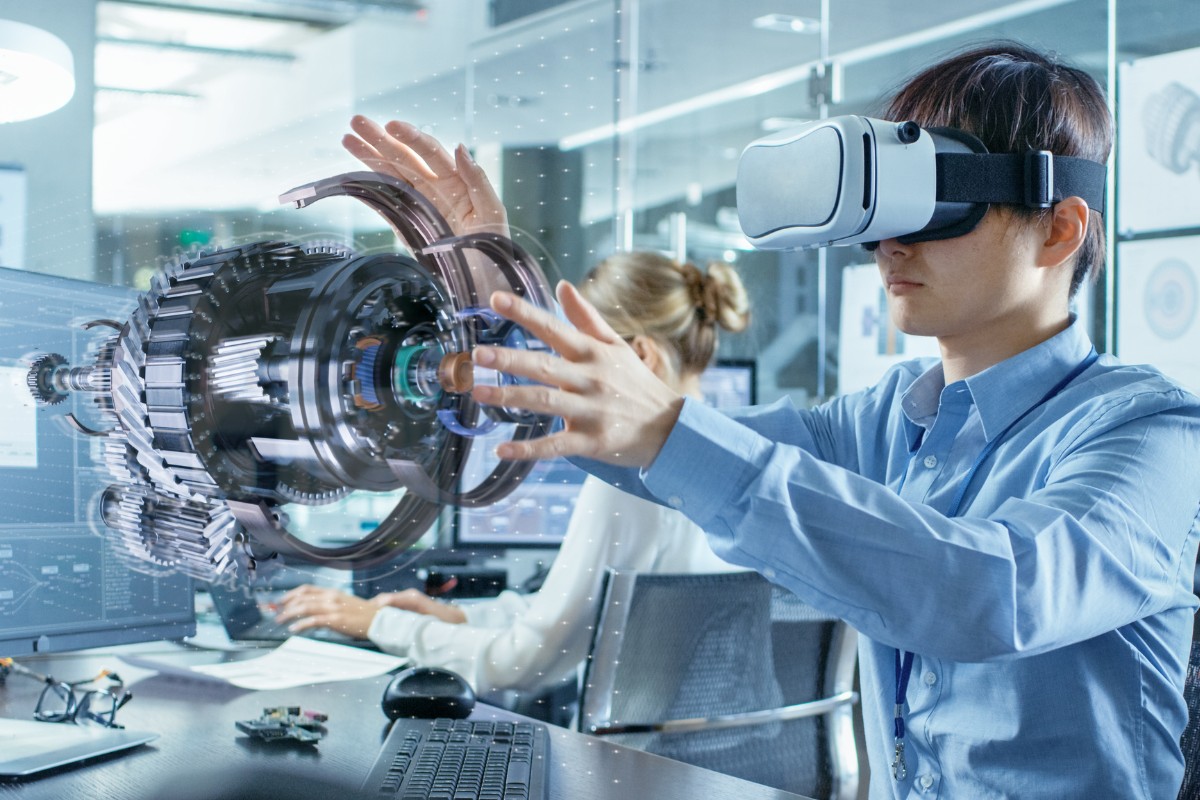
7. The AR and VR market is anticipated to reach $296.9 billion by 2024
The sector of Augmented Reality (AR) and Virtual Reality (VR) is gearing up for an exhilarating journey, as recent statistics suggest a surge in their global market size.
According to Statista’s latest projections, the combined AR and VR market is anticipated to reach an astounding $296.9 billion by 2024.
To put this into perspective, it’s a tenfold increase from the $30.7 billion market recorded just three years earlier in 2021.
(Oberlo)
8. The potential market of VR and AR in the Metaverse ranges from $3.75 trillion to $12.46 trillion
The Metaverse is a digital space where virtual and physical worlds merge.
It enables endless interconnected virtual communities through VR headsets, AR glasses, smartphone apps, and other devices.
The potential market opportunity ranges from $3.75 trillion to $12.46 trillion, depending on how much of the digital economy transitions to the Metaverse and how the market expands.
Often considered the next phase of the internet, the Metaverse holds limitless possibilities for various aspects of our lives.
(Statista)
9. Virtual Reality is forecasted to have an 18% CAGR between 2021 and 2028
Virtual Reality has emerged as a revolutionary technology, captivating the world with its immersive and interactive experiences.
As we delve into the future, the prospects for VR appear more promising than ever.
Between the years 2021 and 2028, industry analysts anticipate a substantial compound annual growth rate (CAGR) of 18% for the VR market.
In simpler terms, this means that over the course of seven years, the VR sector is projected to witness an impressive average annual growth of 18%.
(Grand View Research)
10. The global revenue in Augmented Reality and Virtual Reality is projected to increase by 67.16%
The global revenue in the AR & VR market is set to skyrocket between 2023 and 2027, with a projected increase of $20.9 billion U.S. dollars (+67.1%).
By 2027, the revenue is expected to reach an impressive $52.05 billion U.S. dollars, marking the fourth consecutive year of growth.
The surge is driven by increased adoption across various industries and advancements in hardware and software.
Despite that, challenges in data privacy must be addressed to ensure sustained success.
As of now, the future of AR and VR looks promising, with boundless potential for transformative experiences.
(Statista)
11. The volume of Virtual Reality headsets are expected to be around 27.25 million by 2028
The VR headsets segment of the consumer electronics market is set for remarkable growth between 2023 and 2028, with a projected increase of 5.5 million pieces, representing a significant surge of 25.2%.
This positive trend indicates that the demand for VR headsets is on a continuous rise, and experts anticipate the volume to reach an impressive 27.25 million pieces by 2028, marking a new peak in the industry.
The rising interest in VR headsets can be attributed to various factors, including advancements in technology, more immersive and interactive content, and the increasing applications of virtual reality in various industries beyond gaming, such as education, healthcare, and training.
(Statista)
12. With $5.8 billion invested, China is the top spender in Virtual Reality
China, an Asian giant, took the lead in 2020 by investing a remarkable $5.8 billion in virtual reality (VR) technology, as reported by Statista in 2019.
This financial commitment constituted a substantial 30.8% of the global VR expenditure, which amounted to $18.8 billion that year.
Not far behind, the United States secured its position as the second-largest investor in VR, dedicating a significant $5.1 billion to VR development in 2020.
Together, China and the US accounted for an impressive 58% of the total global VR investment during the year.
(Statista)
13. The Virtual Reality gaming industry is expected to reach $92.31 billion by 2027
The gaming industry is experiencing a significant shift with the rapid adoption of Virtual Reality (VR) technology.
As the demand for more immersive and captivating gaming experiences grows, gaming companies are eagerly embracing VR to cater to the evolving preferences of their audience.
Forecasts for the global gaming market in Virtual Reality indicate a remarkable surge in the upcoming years.
According to the latest statistics, the industry’s value is expected to reach a staggering $92.31 billion by 2027.
This exponential growth reflects a compound annual growth rate of 30.2% during the seven-year period from 2020 to 2027.
(Grand View Research)
Virtual Reality User Statistics
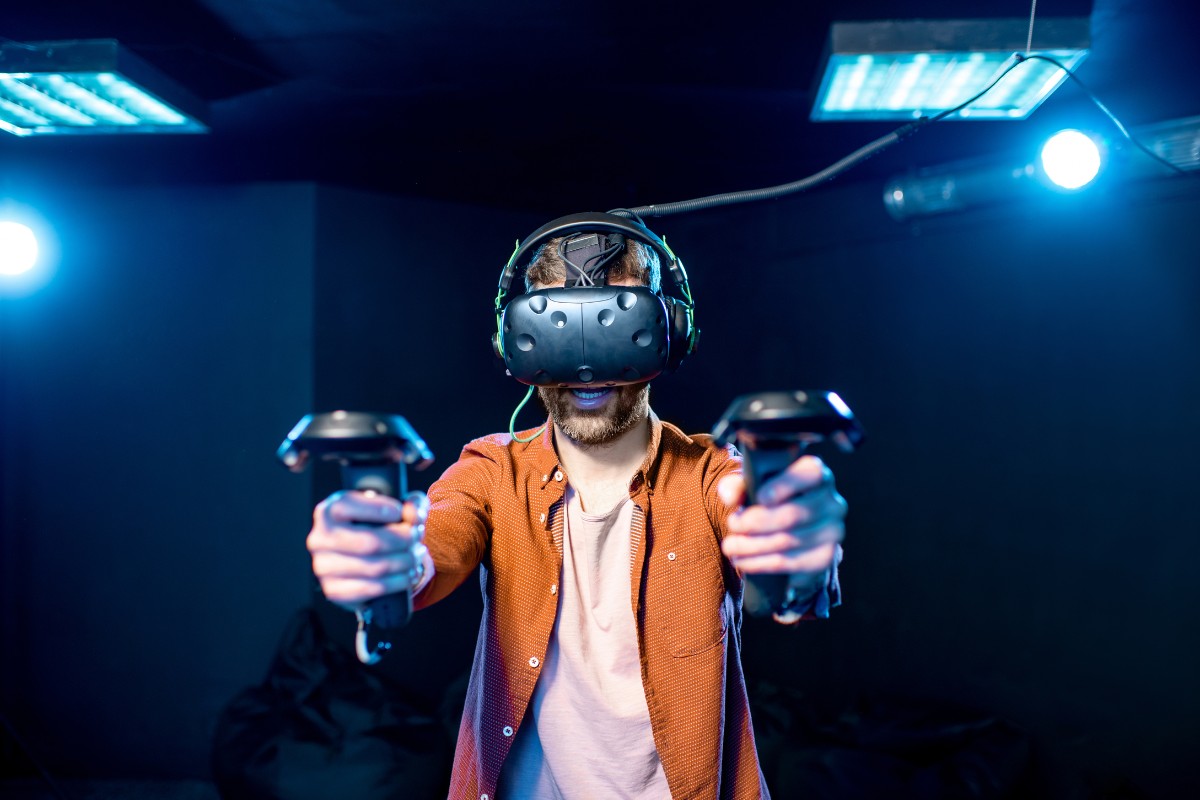
14. Globally, 171 million individuals are utilizing Virtual Reality technology
Virtual Reality technology has witnessed a remarkable surge in adoption worldwide, with 171 million individuals embracing its immersive experiences.
This cutting-edge technology has transcended geographical boundaries, capturing hearts and minds across diverse cultures and age groups.
From gaming and entertainment to education and healthcare, VR’s applications continue to expand, promising to reshape the way we interact and experience reality in the digital era.
(Zippia)
15. Users within the ages of 25 and 34 comprise 23% of VR/AR users
Comprising 23% of VR/AR device users, 25 to 34-year-olds have emerged as the primary driving force behind the VR/AR revolution.
This dynamic age cohort has embraced the immersive technology, fueling its rapid growth and popularity in recent years.
Millennials and young adults within the 25 to 34-year-old age group are well-known for their tech-savvy nature, making them naturally inclined to adopt the latest innovations.
Having grown up in a world of rapid technological advancements, transitioning to VR/AR devices seamlessly aligns with their digitally integrated lives.
(Zippia)
16. 19% of Americans have used VR at some point in their lives
Virtual Reality (VR) has seen a significant rise in popularity among US consumers in recent years.
According to AR Insider’s report in 2020, nearly one in five Americans (19%) embraced VR, marking a noticeable increase from the 16% recorded in 2019.
This surge in adoption is undoubtedly encouraging for the VR market, especially when coupled with the fact that a majority of users, 55% to be exact, expressed high levels of satisfaction with their VR experiences.
A key factor contributing to VR’s success is the power of compelling content.
Engaging and immersive experiences have been instrumental in driving repeat use among consumers, effectively solidifying VR’s position in the technology landscape.
(AR Insider)
17. Cost is the biggest obstacle to VR adoption, with 55% of survey respondents citing this as their primary reason
Despite its undeniable potential, Virtual Reality adoption faces a significant obstacle that hinders its widespread acceptance, and that is cost.
A recent survey revealed that 55% of respondents listed the expensive nature of VR as their top hesitation.
The primary factor contributing to the high costs of VR adoption is the initial investment in premium Virtual Reality systems.
High-end headsets and accompanying accessories can come with a considerable price tag.
Moreover, to experience VR at its best, users may need to invest in powerful computers or gaming consoles, further adding to the overall expense.
This setup can be discouraging for budget-conscious individuals or those uncertain about the long-term benefits of VR technology.
(Zippia)
18. Males make up a larger percentage of VR or AR device owners than females, at 57% compared to 43%
Recent studies reveal that 57% of VR or AR device owners are male, while the remaining 43% are female.
This statistical difference highlights a noticeable gender gap in the adoption of these immersive technologies.
Various factors could contribute to the uneven representation of males and females in Virtual Reality and Augmented Reality device ownership.
The historical underrepresentation of women in STEM fields may influence these patterns, affecting the overall tech industry
(Zippia)
19. The United States has 65.9 million Virtual Reality users
The number of VR users in the U.S. marks a notable milestone, indicating a shift towards a future where virtual experiences play an increasingly integral role in our daily lives.
As more innovations emerge and barriers to entry continue to decrease, the Virtual Reality landscape is sure to flourish, enabling even more Americans to explore the boundless possibilities of this transformative technology.
Throughout the years, the number of virtual reality users in the US has increased as shown by the following annual data collected:
- In 2017, there were 22.5 million Virtual Reality users in the United States
- In 2018, there were 34.6 million Virtual Reality users in the United States
- In 2019, there were 43.1 million Virtual Reality users in the United States
- In 2020, there were 50.2 million Virtual Reality users in the United States
- In 2021, there were 58.9 million Virtual Reality users in the United States
- In 2022, there were 64 million Virtual Reality users in the United States
- In 2023, there are 65.9 million Virtual Reality users in the United States
(Zippia)
20. 70.8 million individuals from the United States use Virtual Reality technology at least once per month
Recent statistics reveal that Virtual Reality (VR) is experiencing a significant surge in popularity, with a projected 70.8 million individuals in the United States engaging with this technology at least once per month in 2023.
Compared to 2022’s figures of 66.8 million users, this marks a notable 6% increase, showcasing VR’s relentless growth.
Impressively, since 2020, there has been an astounding overall spike of 39.6% in VR adoption, reflecting its transformative impact within a relatively short period.
(Oberlo)
Virtual Reality Trends
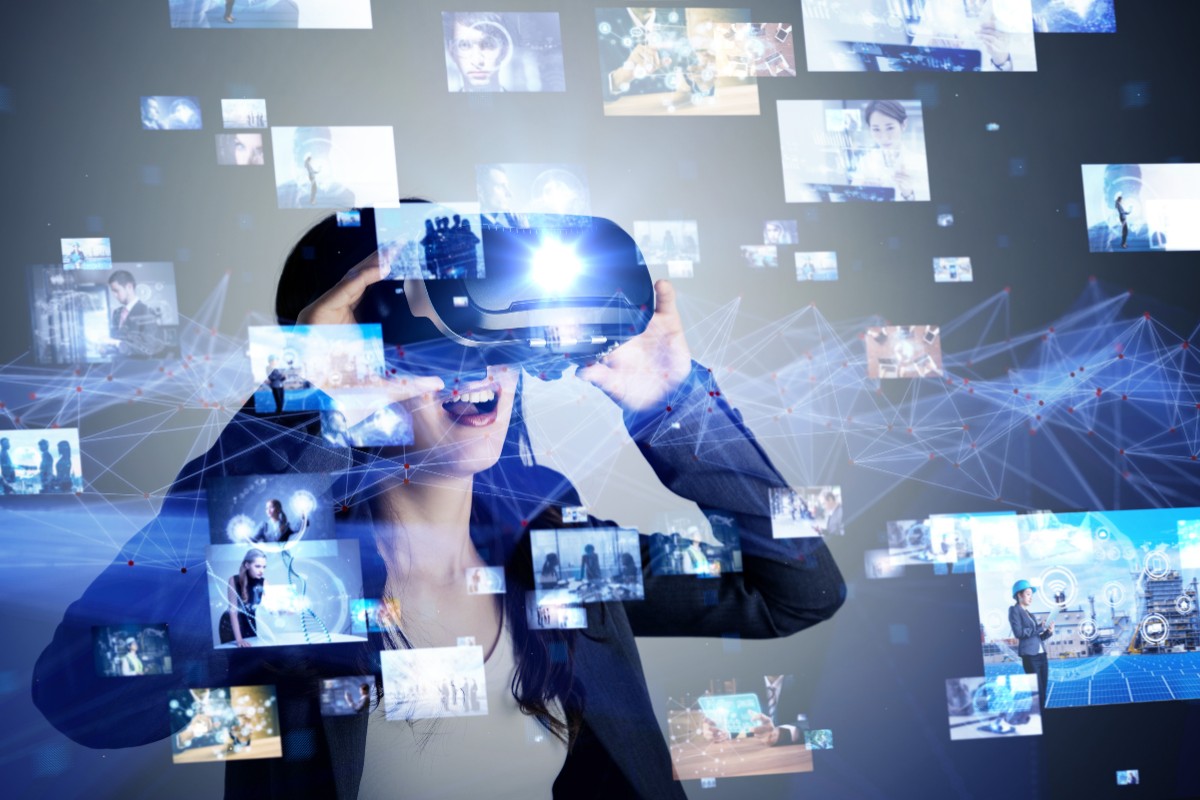
21. By 2030, approximately 23 million job opportunities will involve the utilization of AR and VR technology.
Experts predict that virtual reality (VR) will not only revolutionize the way we experience technology but also bring about substantial economic advantages.
According to a recent analysis, VR has the potential to inject an impressive $1.83 billion into the world economy by the end of this decade.
Beyond its economic impact, VR is also expected to drive job growth.
Currently, there are less than 500,000 jobs worldwide that are directly influenced by VR and AR.
However, this is bound to change dramatically in the coming years.
The report foresees a remarkable surge in job opportunities, with up to 23 million jobs estimated to incorporate AR and VR for training, meetings, and customer service purposes by the year 2030.
(Oberlo)
22. 47% of Americans are now familiar with VR, up from 41%
According to survey data collected in November 2019, 47% of Americans are now at least somewhat familiar with Virtual Reality (VR), which marks a significant increase from 41% just three months earlier in August 2019.
The remaining 53% of respondents fall into two categories.
Some admitted to never having heard of VR before the survey, while others claimed to know about VR but have only a limited understanding of its capabilities.
On the other end of the spectrum, 18% of those surveyed expressed a deeper connection with VR.
They stated that they have been following VR for years and consider themselves knowledgeable, if not borderline experts, in the field.
(Zippia)
Conclusion
The data presented here paints a vivid picture of the rapid rise and transformative impact of Virtual Reality technology.
From the number of VR headsets owned by consumers to the global revenue projections, the statistics demonstrate the immense growth and potential that VR holds across various industries.
VR has indeed emerged as a groundbreaking technology, captivating users and businesses alike, as seen in this updated virtual reality statistics.
With its ability to transport individuals into new realms and revolutionize various industries, VR’s journey has just begun, promising a future where the boundaries between the physical and digital worlds blur, and the possibilities are limitless.







